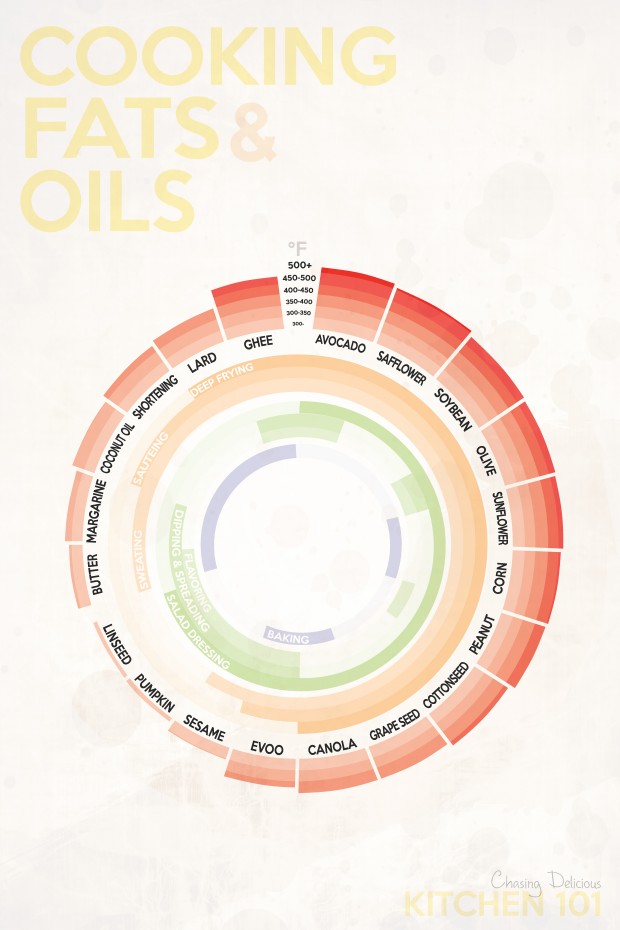The Best Temperatures for Cooking Fats & Oils
What a great topic for an infographic! Different oils have different smoking points. and the Kitchen 101: Cooking Fats & Oils infographic from Chasing Delicious helps you make sense of them.
When it comes to cooking and baking, there is no shortage of fats and oils. Plants, flowers, seeds, nuts, animal fat, and milk almost all seem to end up as a cooking oil or fat at one point in time or another. And today, a trip down the oil isle makes it clear just how many choices exist. But can they all be used interchangeably? And if not, what do you have to take into consideration?
The answer to the first question is a big no. And to answer the second question, you must take in to consideration four main aspects of a cooking oil or fat: 1. smoking point, 2. flavor, 3. how it interacts with other ingredients, and 4. its nutritional value.
No, you can’t just trade out EVOO for peanut oil and expect the same results on the stove!
The circular bar chart is easy to understand for the audience, and the color gradients make comparisons simple between the different oils and fats. The light colors used in the center arcs make the text hard to read though. Available as small printed posters, this infographic would make a great addition to any kitchen.
Found on Lifehacker









 Randy
Randy

Reader Comments (3)